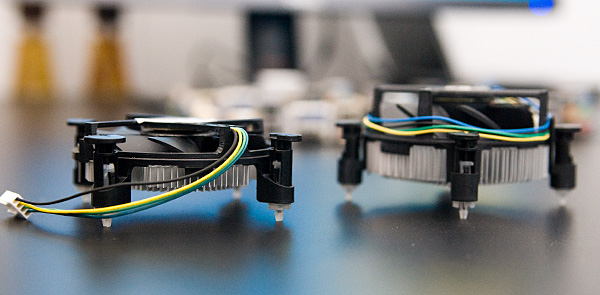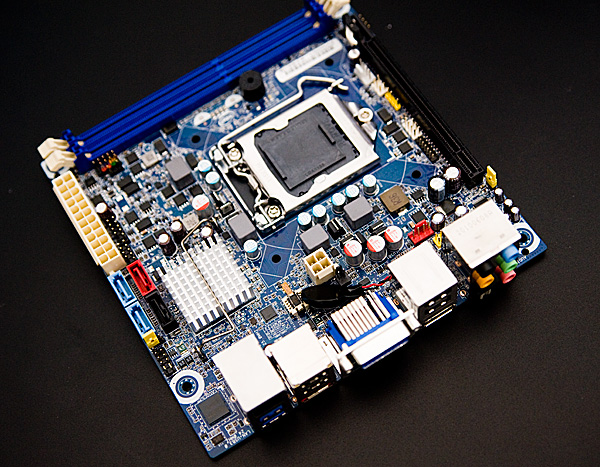Intel's Sandy Bridge Architecture Exposed
by Anand Lal Shimpi on September 14, 2010 4:10 AM EST- Posted in
- CPUs
- Intel
- Sandy Bridge
A few weeks ago we previewed the performance of Intel’s next-generation microprocessor architecture, codenamed Sandy Bridge. We came away impressed with our early look at performance but honestly had very little explanation for why the chip performed the way it did. For the first time in years we knew the performance of an Intel processor without knowing much about its underlying architecture.
Today, that all changes.

Sandy Bridge is Intel’s 2011 performance mainstream architecture refresh. It won’t take the place of the 6-core Gulftown based Core i7 processors at the top of the charts, but it’ll occupy the competitive space below it. The value segments won’t see Sandy Bridge until 2012.
The first CPUs will ship very early in 2011 for both desktops and notebooks. The architecture discussion we have here today applies to both. The CPUs won’t be called Sandy Bridge but instead will be called Intel’s 2nd generation Core i3/i5/i7 microrpocessors. The naming system will follow this format we outlined in our earlier look at Sandy Bridge:

| Sandy Bridge Desktop CPU Comparison | |||||||||
| Base Frequency | L3 Cache | Cores/Threads | Max Single Core Turbo | Intel HD Graphics Frequency/Max Turbo | Unlocked | TDP | |||
| Intel Core i7 2600K | 3.4GHz | 8MB | 4 / 8 | 3.8GHz | 850 / 1350MHz | Y | 95W | ||
| Intel Core i7 2600 | 3.4GHz | 8MB | 4 / 8 | 3.8GHz | 850 / 1350MHz | N | 95W | ||
| Intel Core i5 2500K | 3.3GHz | 6MB | 4 / 4 | 3.7GHz | 850 / 1100MHz | Y | 95W | ||
| Intel Core i5 2500 | 3.3GHz | 6MB | 4 / 4 | 3.7GHz | 850 / 1100MHz | N | 95W | ||
| Intel Core i5 2400 | 3.1GHz | 6MB | 4 / 4 | 3.4GHz | 850 / 1100MHz | N | 95W | ||
| Intel Core i3 2120 | 3.3GHz | 3MB | 2 / 4 | N/A | 850 / 1100MHz | N | 65W | ||
| Intel Core i3 2100 | 3.1GHz | 3MB | 2 / 4 | N/A | 850 / 1100MHz | N | 65W | ||
The CPUs will require a new socket (LGA-1155) and all new motherboards based on Intel’s forthcoming 6-series chipsets.

The new socket

New low-profile 45W Sandy Bridge heatsink (left)
The chipset brings 6Gbps SATA support (2 ports) but no native USB 3, motherboard manufacturers will still have to use an off-chip controller to get USB 3 support. Intel will also enable 5GT/s PCIe 2.0 slots with its 6-series chipsets.

A mini-ITX LGA-1155 Motherboard










62 Comments
View All Comments
iwodo - Tuesday, September 14, 2010 - link
Many questions still not answered, may be Anand could found out for us.1. Were the GPU performance we saw from 6 EU or 12 EU?
2. Where is FMA ( Fused Multiply Add ) ? Will we see it in Ivy Bridge?
3. Can All software developers access the Decoding Engine? We could see many codec being optimized for playback on Intel Hardware Decoder, whether it is fully supported codec or partially supported codec.
4. Hardware Encoder? It is Full Hardware encoder? Free to use for Software Dev?
5. OpenCL not possible?
6. How many % die size is given to Graphics?
7. Gfx Drivers, will Intel commit more resources on drivers update? Or Will they open sources it?
Apart from Sandy Bridge, Looking forward for reports on USB 3.0 situations, LightPeak, Gen 3 SSD.
trivik12 - Tuesday, September 14, 2010 - link
1) I believe it was 12EU part.2) FMA will be introduced with Haswell(next tock). So we have to wait until early 2013 for that.
Foo999 - Tuesday, September 14, 2010 - link
> 2. Where is FMA ( Fused Multiply Add ) ? Will we see it in Ivy Bridge?You can check out the full current (and Ivy Bridge) AVX instructions in the AVX reference manual available from software.intel.com/en-us/avx/
spart - Tuesday, September 14, 2010 - link
1 , 6UE The 12 is only for laptops and high rangesgvaley - Tuesday, September 14, 2010 - link
So, was it playable, I mean Starcraft II?therealnickdanger - Tuesday, September 14, 2010 - link
Yeah, the caption said "310M vs Sandy Bridge" so I assume you could see the settings and frames per second. Details, man, details!!:)
Anand Lal Shimpi - Tuesday, September 14, 2010 - link
Yes, it was playable at medium quality settings. They only had the single player campaign running however.Take care,
Anand
Carleh - Tuesday, September 14, 2010 - link
With BCLK locked, where does that leave the motherboard manufacturers?I mean, what are they left to offer to enthusiasts, if the BCLK is locked? How are they going to differentiate an enthusiast-class motherboard from a mainstream one?
ssj4Gogeta - Tuesday, September 14, 2010 - link
Will they be locking the socket 2011 parts as well?Zoomer - Sunday, September 19, 2010 - link
Sell more bullbozer boards. I was all set to be ready to get a nice Sandy Bridge and overclock it to hell, but now I think I'll get a bulldozer instead.Sure there's the K, but it costs more. That kinda defeats the point, unless the aim is to get a high clk for epeen.